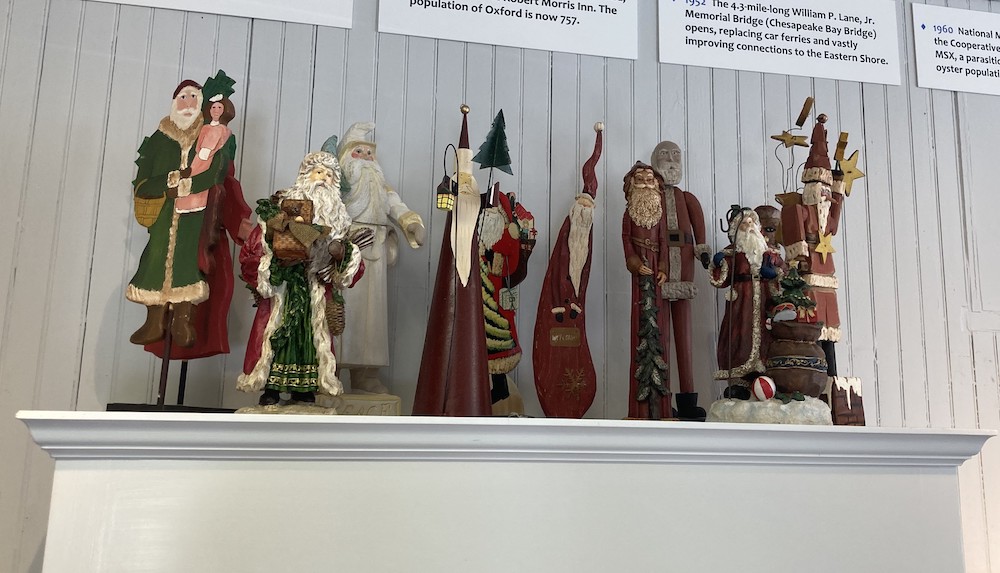The Oxford Museum’s Holiday exhibit will reflect varied holiday traditions and display special collections of twenty-five Oxford Museum Members and friends. From Nutcrackers and Santas to Menorahs and over 300 Toy Soldiers arranged in our large glass display case—this exhibit promises to be a holiday treat for families and friends.
Each exhibit reflects treasures collected around the world, or family heirlooms passed from generation to generation. All bring fond memories to the owners, and smiles to all who view them.
Don Dakin was first in to set up his collection and shared with us his collection story: “I collect metal hand painted toy soldiers made by William Britains & Sons in London between 1893 and 1963. Britains made British and American soldiers and soldiers from many other counties. My first set was a gift from Santa in 1945. I now have 1,347 pieces purchased over the years. These little soldiers are meticulously designed and painted to replicate the actual uniforms and colors of various regiments over many years in many countries from the time of Waterloo to WWII. About 300 will be on exhibit at the Oxford Museum, displaying soldiers from Great Britain. You can test your observation skills with the Museum’s ‘Where’s Waldo’ type hunt to find some of the unique aspects of the soldier exhibit.
The Holiday Exhibit opens on Saturday, November 16 and goes on until Sunday, December 15. Hours are Fri-Sun, 10am – 3 pm. Saturday December 14 at 5:30 there will be caroling in Town Park, followed by refreshments at the Museum. And while the Holiday Collections exhibit is open, everything in our Museum Shop is 20% off! Come get a few holiday gifts checked off your list by shopping local!
Oxford Museum is located at 101 S. Morris Street, Oxford and admission is free of charge. Please visit https://www.oxfordmuseummd.org/ for more information on the museum and this exhibit.



Write a Letter to the Editor on this Article
We encourage readers to offer their point of view on this article by submitting the following form. Editing is sometimes necessary and is done at the discretion of the editorial staff.